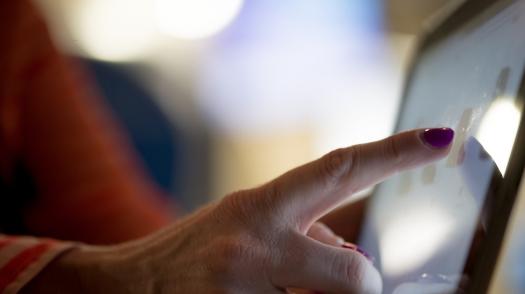This page looks at the broad range of physical effects of acquired brain injury.
Movement
Movement may be affected in different ways, Our brain sends out many thousands of tiny electrical signals which tell our bodies what to do. So when the brain is injured, there may be difficulties with movement.1
The brain is set up so that the left part of the brain controls the movement on the right side of the body, and vice versa.
So if an injury occurs in one side of the brain, some children experience weakness or paralysis in the opposite side of the body.2
Weakness of this kind is called hemiparesis. Paralysis – where someone can’t move that side of their body at all – is called hemiplegia.
Other ways in which movement can be affected
Sometimes a child’s fine movements (dexterity) will be affected. A child may struggle with tasks like writing.
Children may feel dizzy and unbalanced.3
Contractures is a tightening of the muscles that makes it an effort for a child to stretch their limbs. A physiotherapist may be able to teach a child exercises to overcome this difficulty.
Children may have less visible difficulties with a lack of strength, rigidity or tremors in their muscles.4, 5
Dyspraxia/motor planning 6
We’ve looked at how brain injury can restrict those movements we usually make without much thought.
Dyspraxia or difficulties with motor planning are different in that they affect the very deliberate movements we make. The movements we make in sequences – such as reaching for something – require a set order that our brain devises for us.
Dyspraxia affects the way the brain organises these sequences.7
To someone who doesn’t understand the difficulty, it may seem strange. A person with dyspraxia might be able to kick a football that came towards them without thinking about it. But if they were asked to plan their movement: “kick this ball”, they may struggle.
Speech can also be affected by dyspraxia, because it requires many complex movements in sequence.
Headaches 8, 9
Brain injuries can cause headaches for some time after an accident. Sometimes, these headaches can be aggravated by stress or overexertion.
Tinnitus – a ringing or buzzing in the ears – can also be a problem.
Incontinence 4
Control over the bladder and bowels is both a physical and mental exercise. Our brains pick up on the signs that we need to get to a toilet and our body acts on those signs.
After a brain injury, some of these things we take for granted might have to be relearned. Incontinence is a difficulty that isn’t just about physical discomfort. Children might feel embarrassed, and it may also have implications for behaviour in the long-term.
Seizures and epilepsy 10
Like other tissue in our bodies, the brain can scar after an injury. This is more likely to happen if it has been a penetrating injury. These are injuries in which the skull has been penetrated by some kind of impact. Sometimes they may leave a scar. These scars may make the electrical signals that fly around the brain become unstable.
When this happens, there are bursts of uncontrollable activity that cause seizures.11
Like most aspects of acquired brain injury, everyone is affected differently. If these seizures become regular, a child may be diagnosed with epilepsy.
A child’s self-esteem may be affected and they may experience emotional effects.
Children who enjoy sports and activities may not be able to continue with a hobby that is important to them.12
Fatigue
This is a very common element of brain injury. And it’s one that has a big impact on a child’s behaviour, lifestyle and their schooling. At its simplest, fatigue is a form of tiredness that may affect children in different ways. Our fatigue section explains why a child might become over-tired and strategies to deal with it.
Hormones
Sometimes, an acquired brain injury can affect the part of the brain that looks after our hormones. The hormone section explains why you may see new effects of ABI as a child gets older or reaches the age of puberty.
Sensory difficulties
Our brain is the processing centre for each of our senses, and so they can be affected by acquired brain injury.13
The ears, eyes and nose may be working perfectly well, but the brain’s role in understanding this information may mean a child’s senses are affected by acquired brain injury.
Difficulties with sight can range from blurred vision to problems with the field of vision.14
Having difficulties with sight can have a ‘knock-on’ effect on other aspects of a child’s life. Losing part of the field of vision can make it very difficult to get around, or to read.15
Our eyes also make smooth and subtle movements as our head moves around to stop us from becoming dizzy or experiencing vertigo. Injury to the brain can mean these movements aren’t as smooth and children can feel dizzy. Other sensory difficulties can include problems with hearing 4, and difficulties with sense of smell and taste.
Children may also experience difficulties with touch, such as identifying objects by touch. Or appreciating temperature or pain.16 It is important that you see a doctor if you notice any difficulties your child is having with sight, smell, hearing or taste.17 A child's sleep patterns may be affected by ABI.
Disruption of sleep
Most of us know how easy it is to be cranky or ‘not with it’ when we haven’t had enough sleep. An acquired brain injury can affect a child’s sleep patterns.18 This might seem strange when we consider that fatigue, or tiredness, is also a common problem with ABI. But tiredness can actually have the effect of disrupting sleep.
Disruption of a child’s sleep can lead to other difficulties. These might include problems with behaviour, concentration or irritability.19 In other words, it can make the difficulties we associate with acquired brain injury seem more pronounced.
There are methods that might help with these difficulties. You might hear these called ‘sleep hygiene’.


